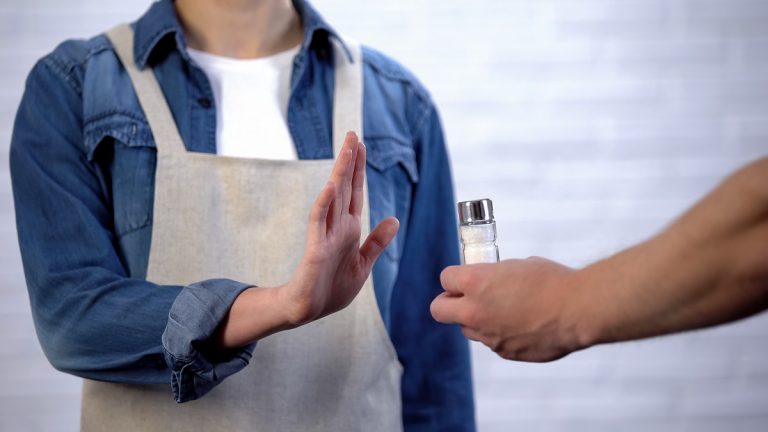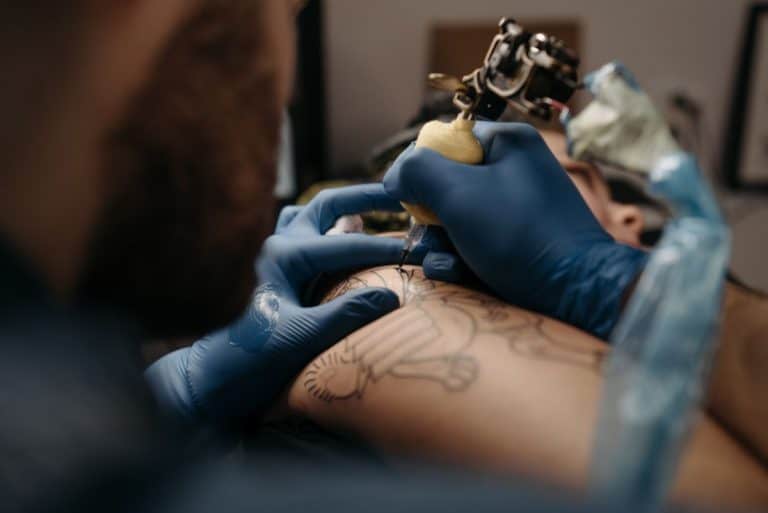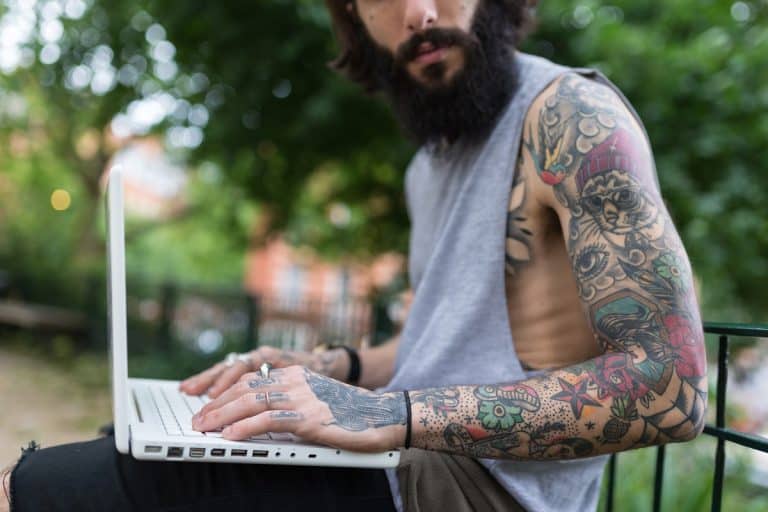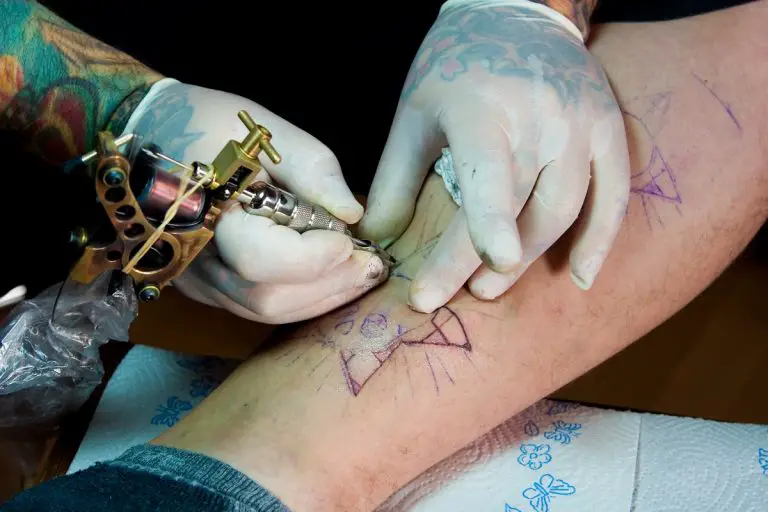Laser Tattoo Removal Aftercare Instructions (5 General Instructions And 7 Equally Important Tips)
There isn’t a tattoo removal procedure as effective as laser tattoo removal. This is currently the only way one can get rid of unwanted ink and actually have incredible results without any skin damage (if the procedure is done correctly of course). Considering that approximately 11% of all tattooed people eventually get their tattoos removed, it is more than important to know how to handle the procedure as well as how to take care of the treated skin.
If you’re about to get your tattooed removed, or you’re already in the process of removal, you’re at the right place. In the following paragraphs, we’ll answer the most common questions people have when it comes to laser tattoo removal and proper, accurate aftercare instructions. So, without further ado, let’s jump right into it!
Laser Tattoo Removal Aftercare Instructions: 5 General Instructions
The general aftercare instructions cover the timeframe and aftercare right after the laser treatment is completed. This is the crucial period for the skin since it needs immediate reaction, immediate immune system boost, and overall quick and proper care. Therefore, here are some of the most important recommendations and must do’s for the general aftercare (done properly);
1. Preventing Infection
The most important thing you can do after the laser treatment is completed is prevent infection. How can you do that? With the help of the over counter antibiotic ointments, like Neosporin, you will protect the treated, weakened skin. At this point, your tattoo will also be covered by a bandage, but after three days you HAVE TO REMOVE IT.
Moisture buildup under the bandage is the perfect place for bacteria growth, which can lead to infection unless the treated skin starts to dry. The only way skin can dry is when it’s exposed to the air. So, for the first three days, keep the tattoo covered and apply antibiotic ointment.
2. Dealing With Scabs and Blisters
Once you remove the bandage from the treated skin, it will start to heal and dry. At this point, you will notice the formation of scabs and blisters. You DO NOT pick the blisters, scabs, or crusts forming over the skin. Picking at a treated, weakened skin can only introduce germs and bacteria, leading directly to an infection.
Furthermore, you may disrupt the healing process as well as cause pigment discoloration in the treated area. Once they’re fully dry and the skin underneath is healed and healthy, the scabs will fall off naturally, and the blisters will disappear as well.
3. Dealing With Itching
It is pretty common to experience itching on the treated area. Do not be alarmed by it; it is just an indication that the skin is healing and recovering. However, it is essential to refrain from scratching the area. Rather, apply a thin layer of a VitaminE moisturizer or 1% Hydrocortisone ointment. And, just to rule out dehydration as the cause of itching, make sure to drink plenty of water.
4. Reacting On Time
If you notice redness, non-healing blisters, crusts, skin irritation, or overall discomfort in the area, it is
time to do something. These are usually the symptoms of an inflammation of the treated area, which need to be dealt with right away.
You can always contact your doctor and the clinic where you completed the laser tattoo removal procedure. We also advise you to take anti-inflammation, over-the-counter medication (like Tylenol). You can try to cool down the inflamed area by applying an ice pack for a few minutes (no longer than 10 minutes!).
We also advise you to contact your clinic immediately if you notice the inflammation getting worse, bruising appearing in ht treated area, tingling of the skin, or any other form of pain or discomfort.
5. Showering
Showering is essential for keeping the skin clean. However, right after the laser tattoo treatment, you need to be careful around water. For example, you can take a quick shower 2 hours after the laser treatment. You cannot clean the treated area directly or have high pulsating water hit the treated skin.
Moreover, soaking in a bath or tub is not recommended, and we also strongly advise you from going swimming. Exposure to water can make it harder for the skin to dry and heal, which can lead to bacteria build-up and potential infection. Moreover, the aforementioned areas of water can contain different kinds of germs and bacteria, which, when introduced to the treated skin, can cause a lot of health issues (like infection, inflammation, scarring).
Laser Tattoo Removal Aftercare Guide: Other, Equally Important, Aftercare Instructions (7 Tips)
The treated skin will take time to heal, and that is something you need to be aware of. Therefore, the aforementioned aftercare instructions are just the beginning of your aftercare journey. Here are some other, equally important, aftercare instructions you need to follow so that your skin heal faster and better;
1. Getting Enough Sleep
Sleep is the time when your body focuses on healing and recovering. Without proper and enough sleep, your body will become even more exhausted, which leads to immune system issues. Without a strong immune system, your body cannot fight off infections, which leaves the treated skin even weaker and more prone to developing an infection.
Try to get anywhere between 6 and 8 hours of sleep; no more, no less (as it can be counterproductive and weaken the immune system further). It is essential to avoid caffeine and alcohol before bedtime, as well as nicotine and other stimulants and toxins.
2. Regular Exercising
Exercise is known to keep us healthy and help our body heal and recover. It helps us boost our immune system, especially when it comes to fighting off foreign bodies in our organism (like the tattoo ink).
Exercising can help your body get rid of any excess ink by boosting the production of cells that get rid of the ink and other foreign objects. So, make sure to hit the gym regularly. Even a half-hour walk can get things going and speed up the whole healing process. However, avoid vigorous exercise for the first 24 hours after the treatment.
3. Water Intake
Without water, our bodies cannot function properly. Improper water intake can lead to serious immune system issues, toxin buildup, and issues with the production of lymph (which carries white blood cells around the body to have them destroy foreign bodies in the blood, like tattoo ink).
Water helps the skin stay hydrated, promotes faster healing, and keeps the skin’s overall health. So, proper water intake is essential for laser tattoo removal aftercare, but also for your overall health. Make sure to drink a minimum of 8 glasses of water daily, and in the case of healing skin, try to am pup your water intake significantly.
4. Proper, Immune-Boosting Nutrition
Apart from proper water intake, it is also essential to keep eating immune-friendly food. Now, certain foods can help your body boost the immune system to the max and ensure faster and proper healing of the treated skin. Make sure to eat lots of nuts, like almonds, leafy greens, broccoli, ginger, citrus fruits, peppers, garlic, salmon, sunflower seeds, etc. This type of nutrition will not only help you heal the treated skin faster but will also keep you healthy and feeling good.
5. Staying in the Shadow
When your skin is healing after a laser tattoo removal procedure, it is essential to keep it far away from sun exposure. Otherwise, you could cause sunburn, and further hypopigmentation or discolored skin in the treated area. If you need to go outside, make sure to keep the treated skin covered and further protected by a bandage. Make sure the clothing isn’t too tight. Once the scabbing and blisters are gone, make sure to apply 20% zinc oxide sunblock to further protect the skin.
6. Refraining from Alcohol and Smoking
Both alcohol and nicotine are known to lower the effectiveness of one’s immune system, making it harder for the body to deal with wounds and the healing process. They also promote dehydration and toxin buildup, which further slows down the healing process and makes the body more prone to inflammation. To keep your body healthy, and to ensure the treated skin heals properly and quickly after the laser treatment, refrain from alcohol and smoking for as long as you can, or try to quit completely.
7. General Aftercare Tips
We have to mention that it is highly important to avoid heat (hot water especially), for the first 48 hours. This can further damage and wound the already weakened, treated skin. Moreover, do not any photo-sensitizing medications (like antibiotics), two weeks prior to your laser removal appointment. And finally, you can apply 1% hydrocortisone ointment to the treated skin once a day, for 5 days, to speed up the healing process and make sure everything goes smoothly.
Final Thoughts
Unless instructed otherwise, this should be your optimal laser tattoo removal aftercare practice. This aftercare routine is suitable for the sensitive, treated skin to ensure it heals quickly and properly, without any inflammation or potential scarring. If you notice your skin isn’t healing or is developing redness, thick scabs, and symptoms of an infection, make sure to talk to your clinician. They should be able to provide exact diagnosis and proper treatment.
Read More:
- Does Tattoo Removal Cause Scarring: Laser Tattoo Removal and Side Effects
- Best Laser Tattoo Removal Machines to Zap That Tattoo in 2023!
- Is Laser Tattoo Removal Expensive? (And Other Removal Options)
- Tattoo Removal: Everything You Should Know (Before You Get a Tattoo)
- Can You Get a New Tattoo After Laser Tattoo Removal?
- Safe, non-toxic plant-based temporary tattoos made with 100% high-definition printing for a realistic look without the pain
- Easy to apply and remove - just stick for 20 seconds then take off
- Set includes 5 sheets with 17 fun, delicate designs like hearts, cats, smiles, suns, moons, and more
- Waterproof and long-lasting - stays on up to 2 weeks of wear
- Fashionable for women, men, girls and boys
- Place on arm, wrist, neck, leg, finger, waist, foot and more
- Great for parties, birthdays, and showing your unique style









